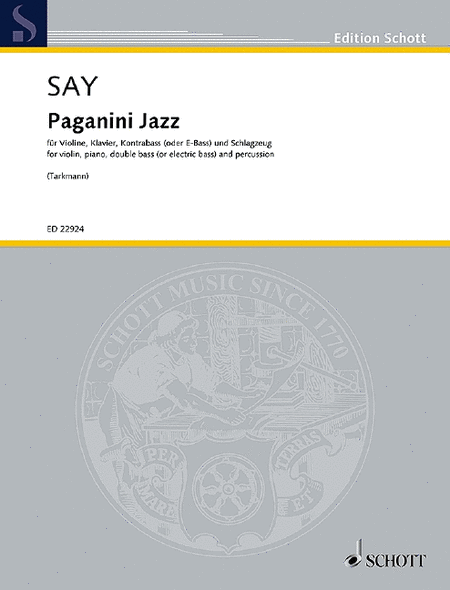Violin, piano, E-bass or double bass and percussion - Digital Download SKU: S9.Q50392 Variations on the Caprice No. 24 in the style of modern jazz. Composed by Fazil Say. Arranged by Andreas N. Tarkmann. This edition: score and parts. Jazz - piano - contemporary music. Downloadable, Score and parts. Op. 5c. Duration 8 minutes. Schott Music - Digital #Q50392. Published by Schott Music - Digital (S9.Q50392). Key: A minor.The concert piece Paganini Jazz by Fazıl Say, which was inspired by classical, modern and jazz styles, is reminiscent of the music of such greats as Scott Joplin, Art Tatum, Gershwin and Bernstein, and was originally designed as a charming encore work (1988); following the appreciative response of music lovers and, in particular, that of music critics, it was transformed over a perion of time into a more substantial work for piano. Briefly, the piece was rewritten and expanded a number of times between 1988 and 1995. We can evaluate the work as having taken its inspiration from Paganini's renowned 24th Capriccio, transforming it into variations on jazz requiring virtuoso rendition as well as being a creation open to the addition of improvisations and a variety of arrangements. Throughout music history a number of composers have written various works inspired by the 24th Capriccio. We can count among them Liszt, Brahms, Rachmaninov and Lutoslavski. In Say's work, however, a different aspect must be noted: the composer is prepared to add various developmental passages and transitional improvisations while interpreting this work in concert. Furthermore, when the work is considered as a short encore piece, it is abbreviated in a manner deemed suitable by Say.
